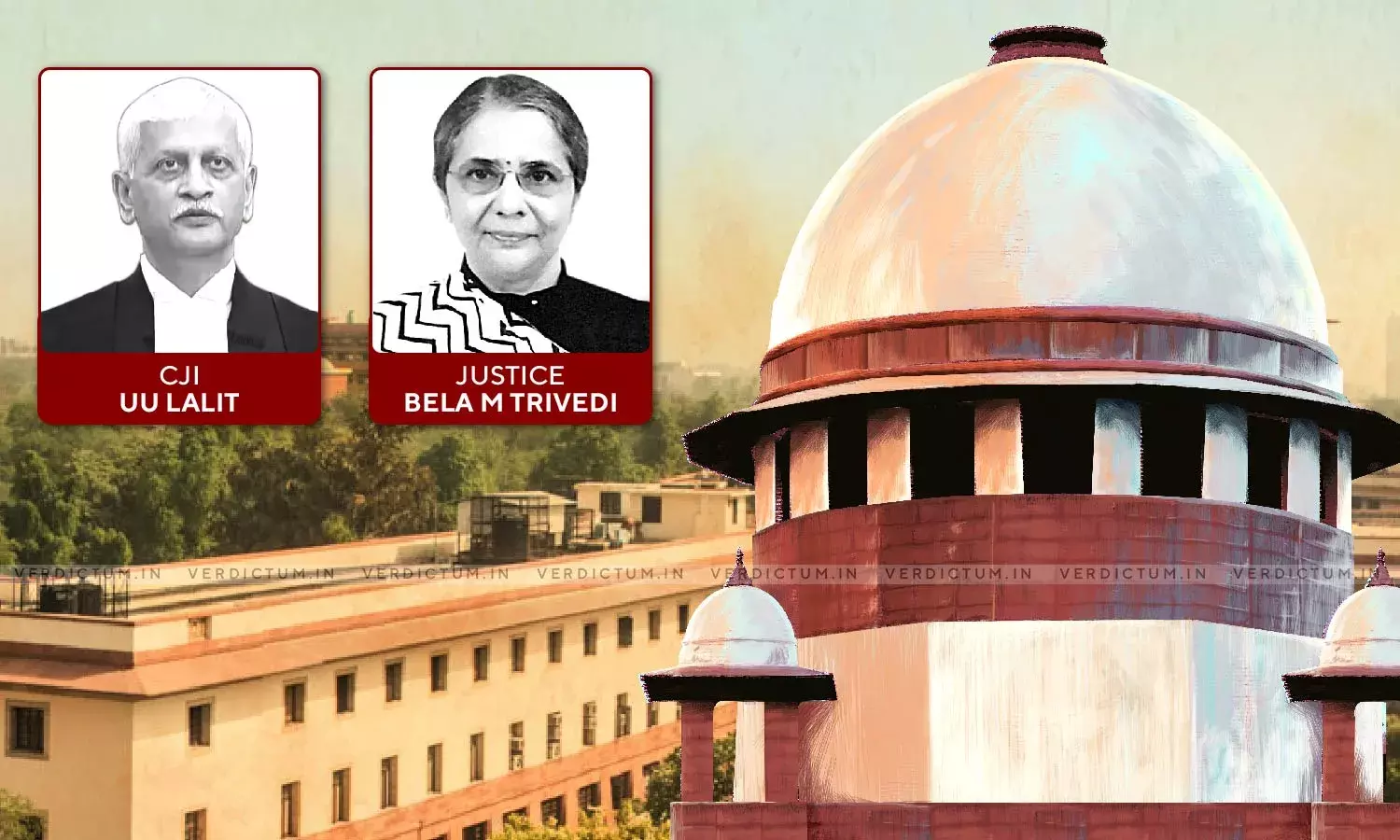Onus Is On Prosecution To Prove That Dead Body Found At Instance Of Accused Was Of Victim & None Else- SC In Murder Case

While acquitting five murder accused, the Supreme Court has observed that the onus is on the Prosecution to prove that the dead body recovered at the instance of the accused of that of the victim and none else.
The Bench of CJI UU Lalit and Justice Bela M. Trivedi was hearing appeals filed against the judgment of the Madras High Court which had confirmed the order of the Trial Court of convicting the appellants-accused under Sections 120-B, 147, 364, and 302 IPC and sentenced the accused to imprisonment for varied terms. Out of the total 5 accused, 2 accused (accused no 1 & 5) filed an appeal against the order of conviction before the Supreme Court.
Advocate Dr. Joseph Aristotle S. appeared for the Respondent-State before the Court.
The Court noted that the entire case of the Prosecution rested on circumstantial evidence and in this context relied upon the case of Sharad Birdhichand Sarda v. State of Maharashtra in which five golden principles related to cases based on circumstantial evidence were laid down.
The Court further examined:
Whether the Prosecution had proved its case beyond a reasonable doubt; and
Whether the entire chain of circumstances was established for not leaving any link missing for the accused to escape from the clutches of law.
The Court referred to the circumstance on which the Prosecution placed heavy reliance which was with regard to the "last seen together" theory relying upon the evidence of PW6 and PW7.
In this context, the Court further noted that the evidence of both PWs 6 and 7 was recorded by the Investigating Officer after six months after the alleged incident, thus their evidence before the Court does not inspire confidence.
The Court thus observed-
"In our opinion, when the Investigating Officer was time and again coming to the taxi stand where all the taxi drivers including the PW-6 and PW-7 used to stand, for inquiring about the deceased's whereabouts, and when wide publicity was made in the local newspapers, television and radio about the deceased having gone missing, it is not believable that the PW-7 came to know about the deceased having gone missing only when the police came to him to make inquiry six months after the incident in question."
The Court further held that it is well settled that if there is a considerable gap between the persons seeing together and the proximate time of the crime, the circumstance of last seen together, even if proved cannot clinchingly fasten the guilt of the accused. [State of Goa v. Sanjay Thakran].
Additionally, the Bench in this context also held-
"The failure of the accused, in a case based on circumstantial evidence which included "last seen together theory", to explain under Section 313 Cr.PC as to under what circumstances the victim suffered death, would also not be a ground to arrive at an irresistible conclusion that the accused were involved in the commission of the alleged crime. In the instant case, even if the theory of "last seen together" propounded by the prosecution is accepted, then also it is difficult to draw an irresistible conclusion that the accused are guilty of the alleged offences, merely because they failed to explain as to under what circumstances the victim suffered death."
The next circumstance the Court referred to what was relied upon by the Prosecution was the identification of the body.
In this context, the Court noted that the skeletal remains of the body were found almost 5 months from the date of the incident of the deceased having gone missing. Thus, the identification was done through skull super imposition test through a forensic expert.
The Court while referring to the aforementioned fact, placed reliance on Pattu Rajan v. State of Tamil Nadu, where the Apex Court has explained that though identification of the deceased through superimposition is an acceptable piece of opinion evidence, however the courts generally do not rely upon opinion evidence as the sole incriminating circumstances, given its fallibility, and the superimposition technique cannot be regarded as infallible.
Thus, the Court held that since in the case, the super imposition report was not supported by any other reliable medical evidence like DNA report or post mortem report, it would be very risky to convict the accused believing the identification of the dead body of the victim through the super-imposition test.
The Court agreed with the contention of the Appellants that the Prosecution had failed to prove the motive of the accused for committing the alleged crime.
The Court thus observed, "…having regard to the totality of evidence adduced by the prosecution, in our opinion, the circumstances relied upon by the prosecution did not complete the chain to dispel the hypothesis of innocence of the appellants accused. The prosecution having failed to establish through clinching, clear, cogent and consistent evidence, the chain of events, on the basis of which the guilt of the appellants-accused could be established, in our opinion, the Courts below had committed an error in accepting the case of prosecution and convicting them for the alleged crime."
Accordingly, the Court acquitted the appellants-accused of all the charges and directed for their release, and allowed the appeal.
Cause Title – S. Kaleeswaran & Ors. v. State by the Inspector of Police Pollachi Town, East Police Station, Coimbatore District, Tamil Nadu
Click here to read/download the Judgment

